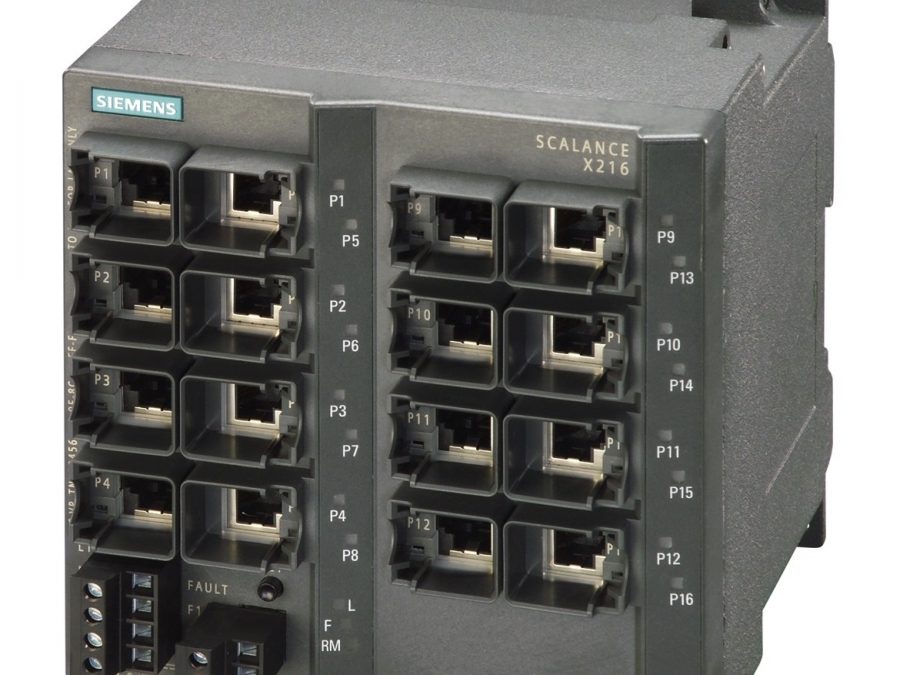1. EXECUTIVE SUMMARY
-
CVSS v3 5.4
- ATTENTION: Exploitable remotely
- Vendor: Siemens
- Equipment: SCALANCE X
- Vulnerability: Expected Behavior Violation
2. RISK EVALUATION
Successful exploitation of this vulnerability could allow an attacker to feed data over a mirror port and into the mirrored network.
3. TECHNICAL DETAILS
3.1 AFFECTED PRODUCTS
The following SCALANCE products are affected:
- SCALANCE X-200, all versions;
- SCALANCE X-300, all versions; and
- SCALANCE XP/XC/XF-200, all versions older than v4.1
3.2 VULNERABILITY OVERVIEW
3.2.1 EXPECTED BEHAVIOR VIOLATION CWE-440
The monitor barrier of the affected products insufficiently blocks data from being forwarded over the mirror port and into the mirrored network. An attacker could exploit this vulnerability to transmit malicious packets to systems in the mirrored network to influence their configuration and runtime behavior.
This vulnerability could be exploited by an attacker with network access to the traffic-receiving network. Successful exploitation requires no system privileges and no user interaction. An attacker could use the vulnerability to compromise the confidentiality and availability of the traffic-generating network.
CVE-2019-6569 has been assigned to this vulnerability. A CVSS v3 base score of 5.4 has been calculated; the CVSS vector string is (AV:N/AC:H/PR:N/UI:N/S:C/C:L/I:N/A:L).
3.3 BACKGROUND
- CRITICAL INFRASTRUCTURE SECTORS: Chemical, Critical Manufacturing, Energy, Food and Agriculture, and Water and Wastewater Systems
- COUNTRIES/AREAS DEPLOYED: Worldwide
- COMPANY HEADQUARTERS LOCATION: Germany
3.4 RESEARCHER
Siemens reported this vulnerability to NCCIC.
4. MITIGATIONS
Siemens has identified the following specific workaround/mitigation that users can implement to reduce the risk associated with this vulnerability in SCALANCE XP/XC/XF-200:
- Update to v4.1: https://support.industry.siemens.com/cs/ww/en/view/109762982
Until a software update can be installed, Siemens recommends users apply defense in depth principles, particularly ensuring that no devices that transmit data back in the mirroring network are operated within the mirrored network.
As a general security measure, Siemens strongly recommends users protect network access to devices with appropriate mechanisms. To operate devices in a protected IT environment, Siemens recommends configuring the environment according to Siemens’ operational guidelines for industrial security (https://www.siemens.com/cert/operational-guidelines-industrial-security), and following the product manual recommendations.
NCCIC recommends users take defensive measures to minimize the risk of exploitation of this vulnerability. Specifically, users should:
- Minimize network exposure for all control system devices and/or systems, and ensure that they are not accessible from the Internet.
- Locate control system networks and remote devices behind firewalls, and isolate them from the business network.
- When remote access is required, use secure methods, such as Virtual Private Networks (VPNs), recognizing that VPNs may have vulnerabilities and should be updated to the most current version available. Also recognize that VPN is only as secure as the connected devices.
NCCIC reminds organizations to perform proper impact analysis and risk assessment prior to deploying defensive measures.
NCCIC also provides a section for control systems security recommended practices on the ICS-CERT web page. Several recommended practices are available for reading and download, including Improving Industrial Control Systems Cybersecurity with Defense-in-Depth Strategies.
Additional mitigation guidance and recommended practices are publicly available on the ICS-CERT website in the Technical Information Paper, ICS-TIP-12-146-01B–Targeted Cyber Intrusion Detection and Mitigation Strategies.
Organizations observing any suspected malicious activity should follow their established internal procedures and report their findings to NCCIC for tracking and correlation against other incidents.
This vulnerability requires high skill level to exploit. No known public exploits specifically target this vulnerability.
Source:
https://ics-cert.us-cert.gov/advisories/ICSA-19-085-01


Stay connected